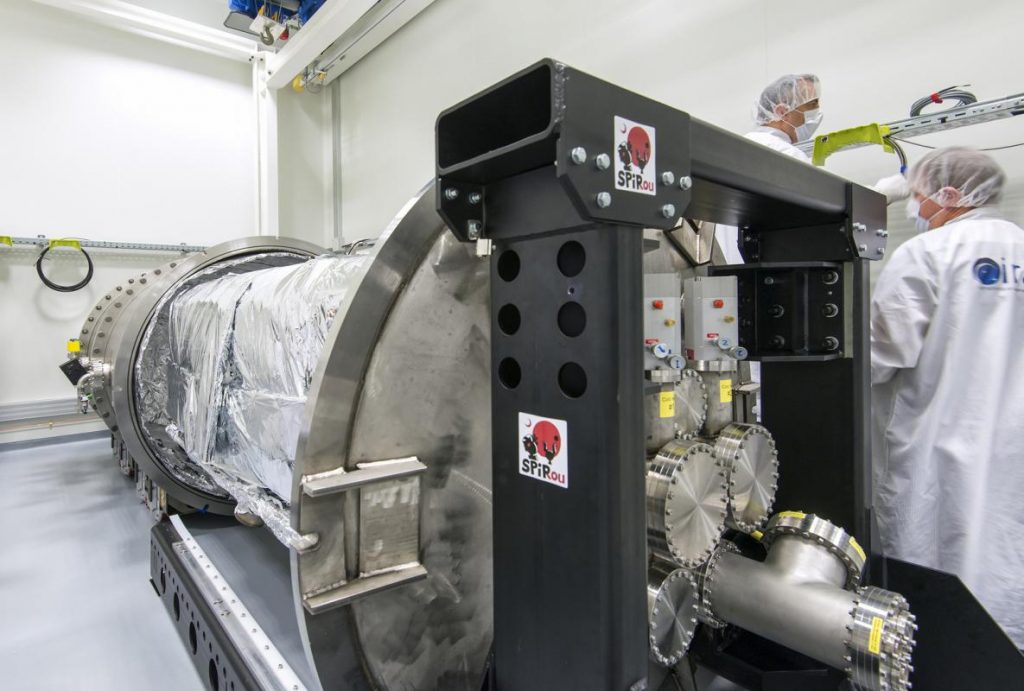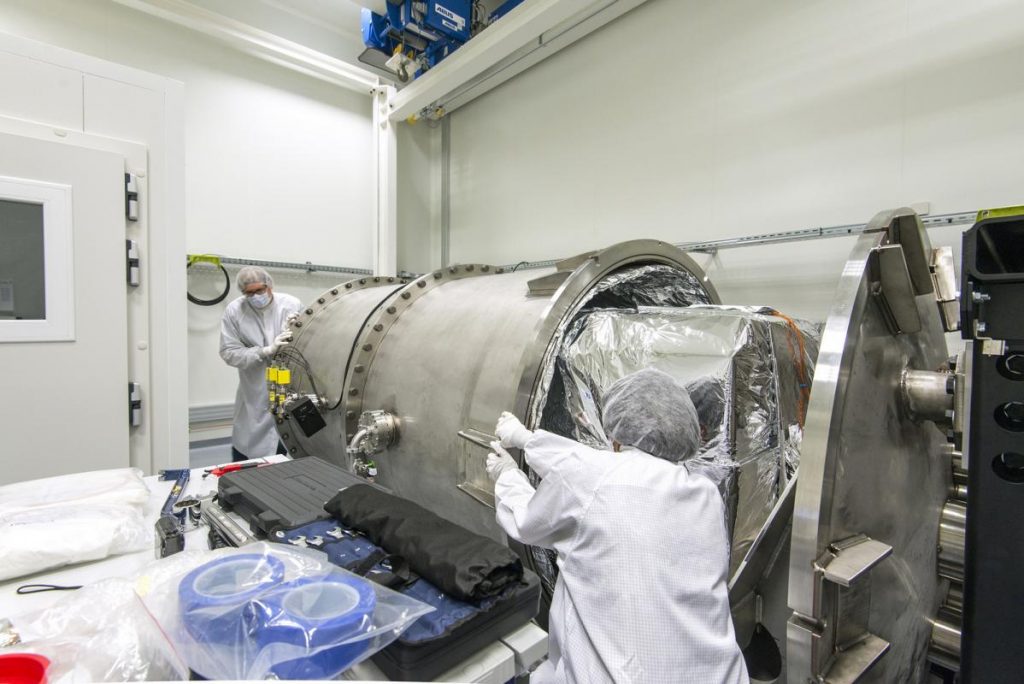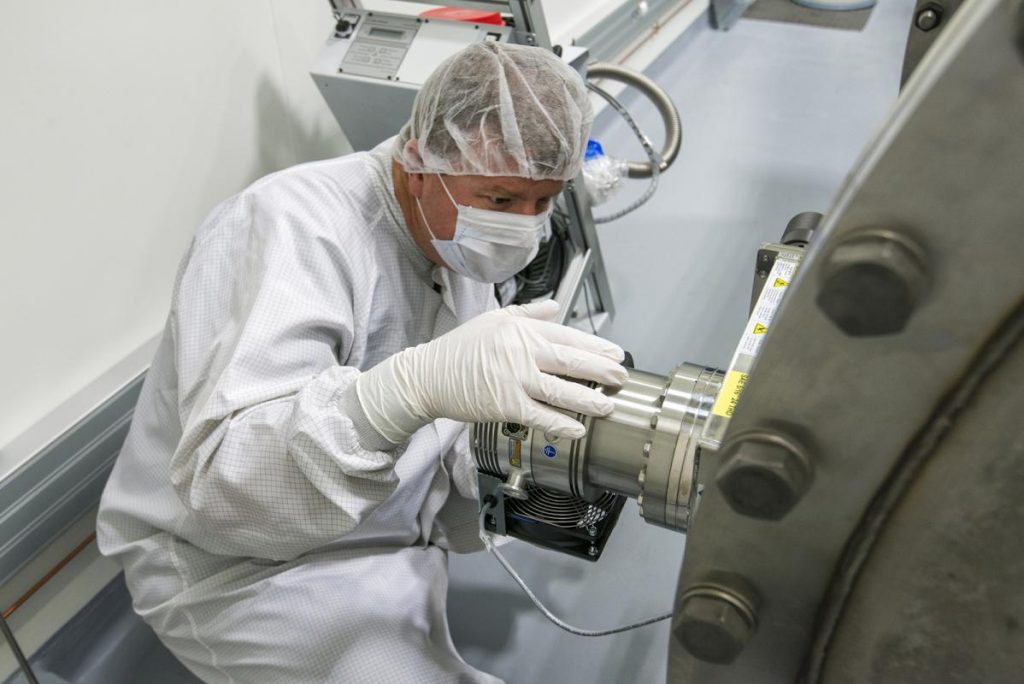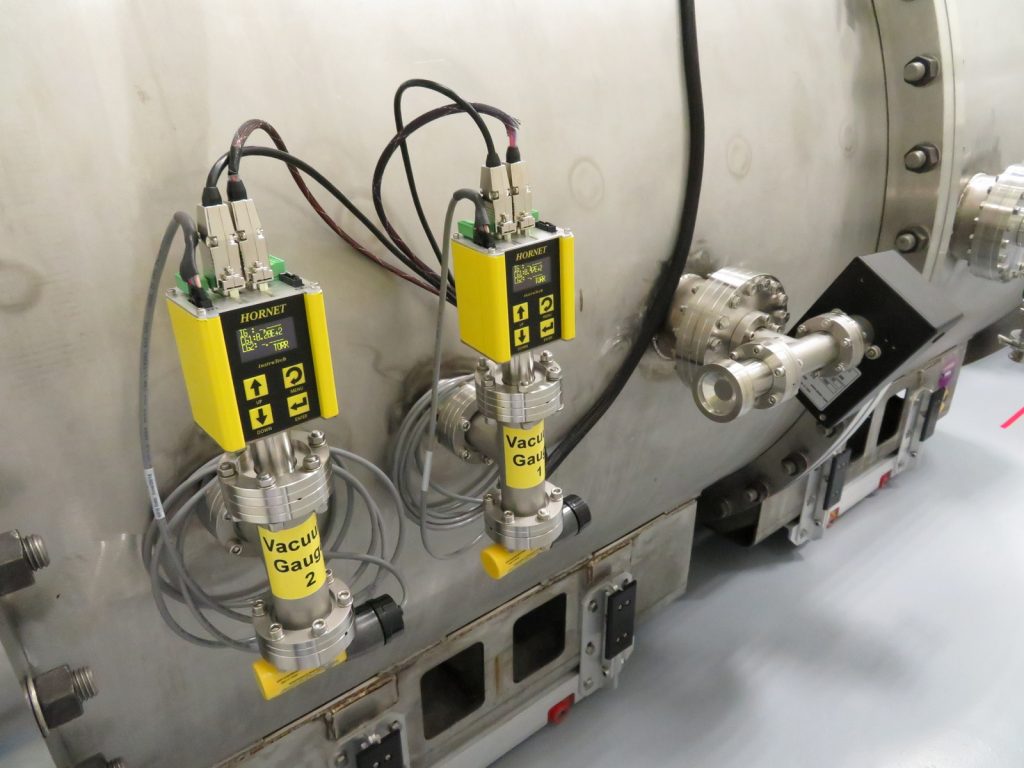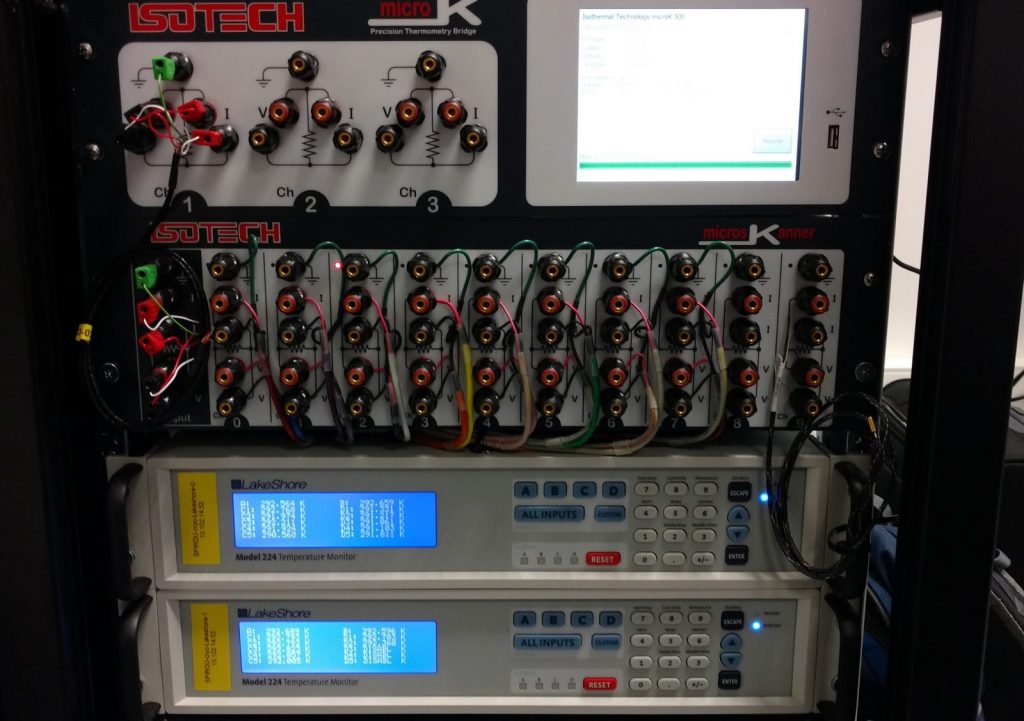2016 October: SPIRou cryostat cooling tests ongoing at IRAP/OMP
The SPIRou Cryostat was re-assembled at IRAP/OMP and is undergoing cooling tests
The second phase of the spectrograph cryo-mechanics integration is now ongoing at IRAP/OMP (Toulouse, France) with the cryostat cooling tests as part of the acceptance procedure.

Following the cryo-mechanics assembly and alignment activities, the primary vacuum pump, the turbo-molecular pump, the cryogenics compressors and all the gauges and sensors were connected. The monitoring is also activated thanks to a dedicated command-control cabinet.
The first step consisted in operating a rough vacuum inside the cryostat down to 10-2 mbar; the turbo-molecular pump then took over in order to reach a high vacuum of 10-5 mbar. This step, during which all materials inside the cryostat naturally outgas (rejecting dust and particles, in particular the multi-layer insulation) required a couple of days to reach a stable state.
Cooling can then start using Helium compressors and coolers to decrease the temperature inside the cryostat, from room temperature (300 K) down to 80 K. A key parameter for the velocimetric precision of SPIRou is the temperature stability of better than 2 mK rms that the cryostat must verify; this performance, already reached during construction at NRC-H, will be validated during this first cooling cycle.
These activities are carried out by Leslie Saddlemyer, Rob Messing, both from NRC-H (Victoria, Canada), and Nicolas Striebig from IRAP/OMP.
